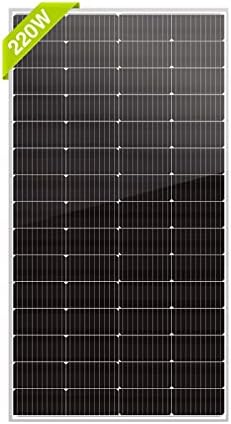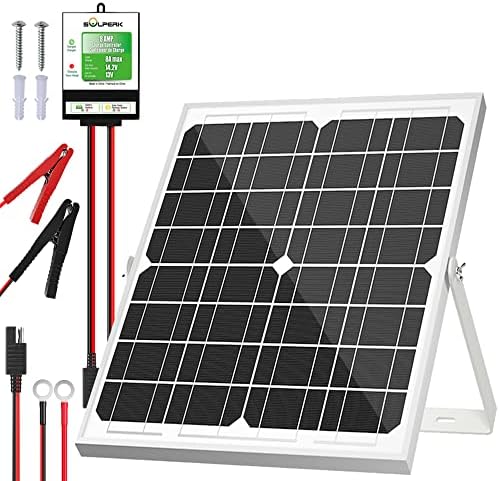# Navigating the Solar Panel Market: A Comparison of Different Types
The first time I stood under the sun, basking in its golden rays, I realized how much energy was rushing around me, practically begging to be harnessed. That moment sparked my deep interest in solar energy, leading me down the path of passionate exploration into the world of solar panels. After months of research, testing, and a bit of trial and error, I eagerly took the plunge into the solar market, ready to transform sunlight into power for my off-grid lifestyle. But let me tell you, the journey was as winding as the trails I walked daily! Today, I’m excited to share a vibrant overview of the solar panel market and offer useful tips for anyone stepping into this sunny realm.
## Understanding Solar Panel Types
Solar panels aren’t just boxes on your roof; they are key players in the pursuit of energy independence! Let’s break down the types of solar panels available on the market, each with its distinct benefits and potential drawbacks.
### Monocrystalline Solar Panels
Monocrystalline panels are often seen as the crème de la crème of solar technology. Crafted from a single crystal structure, these panels boast an efficient energy conversion rate—typically around 15-22%.
#### **Pros:**
– **High Efficiency:** They perform well in low-light conditions and offer the most efficient energy conversion rate.
– **Longevity:** These panels have long lifespans, often exceeding 25 years.
– **Space-Efficient:** Because they generate more power per square foot, they’re ideal for limited-space installations.
#### **Cons:**
– **Higher Upfront Costs:** The production process is more complex, resulting in higher initial investments.
– **Temperature Sensitivity:** Efficiency can decrease in higher temperatures compared to other types.
### Polycrystalline Solar Panels
The polycrystalline option is the friendly neighbor of the solar family. Made from multiple crystal structures, these panels are often recognized by their speckled blue hue.
#### **Pros:**
– **Cost-Effective:** They are typically less expensive to manufacture and purchase.
– **Good Performance:** They still provide decent efficiency, typically around 13-16%.
#### **Cons:**
– **Lower Efficiency:** They require more space for the same amount of power as monocrystalline panels.
– **Temperature Sensitivity:** Like their monocrystalline cousins, their efficiency can dip in high heat.
### Thin-Film Solar Panels
Thin-film panels are the underdogs of the solar world. Made by depositing photovoltaic material onto a substrate, these panels are lightweight and flexible.
#### **Pros:**
– **Lightweight and Flexible:** Perfect for portable setups and unconventional installations.
– **Performance in Low Light:** They tend to perform better in high temperatures and shady conditions.
#### **Cons:**
– **Lower Efficiency:** They convert only about 10-12% of sunlight into electricity, meaning you’ll need more panels to match the power output of crystalline options.
– **Space Requirements:** To generate the same amount of energy, you’ll need more square footage.
## How to Choose the Right Solar Panel
### Step 1: Assess Your Needs
Before you dive headlong into the solar seas, evaluate your energy needs. Consider the appliances, lighting, and devices you plan to power. For a small cabin, a modest system might suffice, while a larger setup will require more robust panels.
### Step 2: Consider Your Space
Space is a vital factor. If you have ample roof space, you can opt for the most efficient panels available. However, if you’re limited on space, you might lean toward monocrystalline panels for their superior energy output.
### Step 3: Budgeting Wisely
Solar panels are an investment! While it’s tempting to go for the cheapest option, think long-term. Often, the higher upfront costs of monocrystalline panels can pay off in energy savings over the years.
### Step 4: Research Local Incentives
Many states and local governments offer incentives for solar panel installations, such as tax credits, rebates, and grants. Do your homework and see what financial benefits you can snag!
## Pro Tips for Navigating the Solar Market
1. **Ask Questions:** Be vocal about your energy requirements and listen to experts. Their knowledge can guide you toward the best options.
2. **Do the Math:** Before purchasing, calculate the cost per watt for different solar panels. Don’t just focus on the initial price—look at efficiency and longevity too.
3. **Glass vs. Non-Glass:** For durable installations, glass-covered panels are usually more robust than their plastic counterparts, which might degrade faster.
4. **Consider Brands:** Opt for trusted manufacturers with good warranties. Reputation can signal quality.
5. **Maintenance Matters:** Solar panels are generally low-maintenance, but regular inspections and cleaning can maximize performance and longevity.
## Installation: DIY vs. Professional Help
Now that you’ve decided on the type of solar panel that fits your lifestyle, the next critical step is installation.
### DIY Installation
If you’re handy and eager to engage in a DIY project, you might consider installing the panels yourself. Not only can this save you money on labor costs, but it can be incredibly rewarding. There are plenty of online resources and kits available for those ready to tackle this challenge.
### Professional Installation
On the flip side, hiring professionals can save time and ensure a well-constructed and compliant installation. Many solar companies offer warranties and support, giving you peace of mind in your investment. If you’re not comfortable with electrical work or if your roof requires modifications, professional service might be the way to go.
## Eco-Friendly Financing Options
Solar energy isn’t just a choice; it’s a commitment to a sustainable future! Explore green financing options that support eco-friendly projects. Many banks and credit unions offer special loans dedicated to renewable energy investments, which can help minimize the upfront costs.
## The Growing Trends in Solar Technology
As technology advances, the solar market evolves. Here are some exciting trends shaping the future of solar energy:
1. **Bifacial Panels:** These panels capture sunlight on both sides, increasing energy production and making them a smart choice for large-scale installations.
2. **Solar Roofs:** Instead of traditional panels, more companies are now offering solar shingles that integrate seamlessly into your roof design.
3. **Energy Storage Systems:** Advances in battery technology, like lithium-ion batteries, allow you to store solar energy for later use, making your setup more reliable, especially for off-grid lifestyles.
4. **Smart Solar Technology:** Innovations in smart grid technology and home automation systems allow for real-time monitoring of energy consumption and production.
## The Bottom Line
Navigating the solar panel market may seem daunting at first, but armed with the right knowledge, it can be a delightful adventure. Whether you opt for the high efficiency of monocrystalline panels, the affordability of polycrystalline options, or the versatility of thin-film panels, the same principle applies: harnessing the sun helps reduce your carbon footprint and promotes energy independence.
Remember, every step you take toward solar energy is a step toward a more sustainable future. Bring on those sunny days, and let the solar journey unfold!



